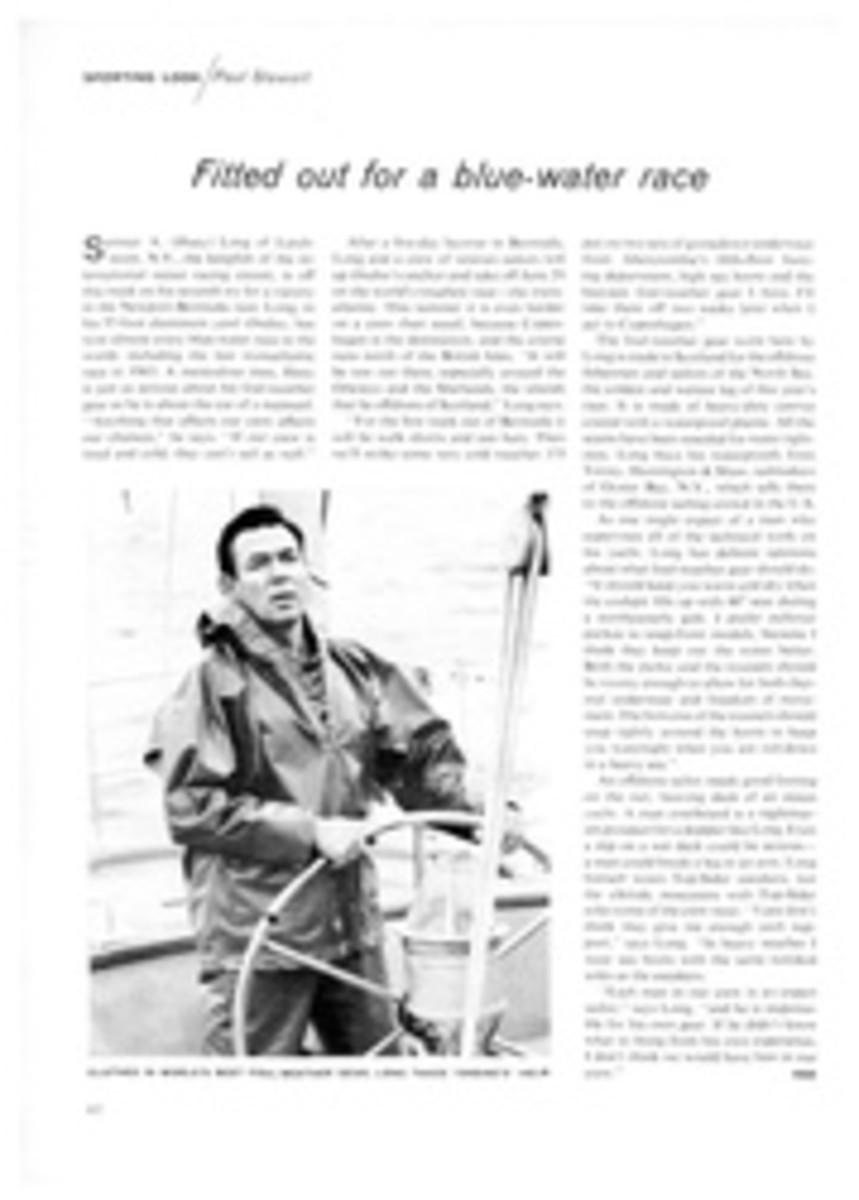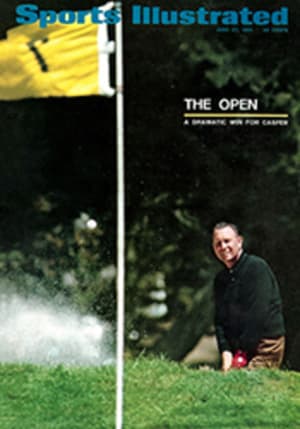
Fitted out for a blue-water race
Sumner A. (Huey) Long of Larchmont, N.Y., the kingfish of the international ocean racing circuit, is off this week on his seventh try for a victory in the Newport-Bermuda race. Long, in his 57-foot aluminum yawl Ondine, has won almost every blue-water race in the world, including the last transatlantic race in 1963. A meticulous man, Huey is just as serious about his foul-weather gear as he is about the cut of a mainsail. "Anything that affects our crew affects our chances," he says. "If our crew is tired and cold, they can't sail as well."
After a five-day layover in Bermuda, Long and a crew of veteran sailors will up Ondine's anchor and take off June 29 on the world's toughest race—the transatlantic. This summer it is even harder on a crew than usual, because Copenhagen is the destination, and the course runs north of the British Isles. "It will be raw out there, especially around the Orkneys and the Shetlands, the islands that lie offshore of Scotland," Long says.
"For the first week out of Bermuda it will be walk shorts and sun hats. Then we'll strike some very cold weather. I'll put on two sets of goosedown underwear from Abercrombie's fifth-floor hunting department, high sea boots and the heaviest foul-weather gear I have. I'll take them off two weeks later when I get to Copenhagen."
The foul-weather gear worn here by Long is made in Scotland for the offshore fishermen and sailors of the North Sea, the coldest and wettest leg of this year's race. It is made of heavy-duty canvas coated with a waterproof plastic. All the seams have been resealed for water tightness. Long buys his waterproofs from Torrey, Huntington & Shaw, sailmakers of Oyster Bay, N.Y., which sells them to the offshore sailing crowd in the U.S.
As one might expect of a man who supervises all of the technical work on his yacht, Long has definite opinions about what foul-weather gear should do. "It should keep you warm and dry when the cockpit fills up with 40° seas during a northeasterly gale. I prefer pullover parkas to snap-front models, because I think they keep out the water better. Both the parka and the trousers should be roomy enough to allow for both thermal underwear and freedom of movement. The bottoms of the trousers should snap tightly around the boots to keep you watertight when you are rail-down in a heavy sea."
An offshore sailor needs good footing on the wet, heaving deck of an ocean yacht. A man overboard is a nightmarish prospect for a skipper like Long. Even a slip on a wet deck could be serious—a man could break a leg or an arm. Long himself wears Top-Sider sneakers, not the elkhide moccasins with Top-Sider soles some of the crew wear. "I just don't think they give me enough arch support." says Long. "In heavy weather I wear sea boots with the same nonskid soles as the sneakers.
"Each man in our crew is an expert sailor," says Long, "and he is responsible for his own gear. If he didn't know what to bring from his own experience, I don't think we would have him in our crew."
PHOTO
CLOTHED IN WORLD'S BEST FOUL-WEATHER GEAR, LONG TAKES "ONDINE'S" HELM

